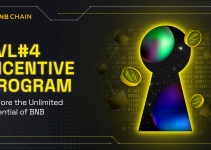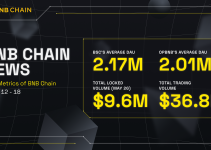Bitcoins have often drawn comparisons to gold. It’s a debate as old as Bitcoin itself, and it will endure as long as both remain adequate stores of value. This can happen due to either innovation or lack of demand.
Gold, which has long been considered a safe haven for investments, has finally met its challenger. The latest economic, political, and social events, combined with the pandemic effects, are brewing the perfect financial storm for a new financial world. Brexit, upcoming US elections, COVID-19 stimulus packages designed to stimulate a V-shaped economic recovery, and other factors create tension and expectations of what’s waiting for financial markets. In such dire circumstances, people around the world are seeking a safe haven for their wealth. Can Bitcoin replace gold?
“Bitcoin isn’t a get rich quick scheme, it’s a don’t get poor slowly scheme.”
Jameson Lopp, Co-founder & CTO @CasaHODL
In the last six months, since the first signs of the upcoming COVID-19 crisis, gold was steadily growing in price while Bitcoin experienced a few shakeouts. Over this period, the gold price surged by 25%, while BTC price grew just under 14%. Keep in mind, both gold and Bitcoin require low time preference, and both have a strong historic record of growth.
Six months view comparing BTC and GOLD growth. Source: TradingView.com
Is Bitcoin digital gold?
There’s no simple answer to this question. While many tend to call Bitcoin “digital gold,” there are many arguments against this nickname. Gold serves many purposes – it is used as an investment, store of value, manufacturing material, jewelry, or even medicine. However, long gone are the times when gold served as a payment method. There are still some transactions made in gold, but you’d hardly buy food or clothing using gold bars. Making a transaction with physical gold is also slow, expensive, and risky; and that’s where Bitcoin comes into play. Because of its digital form, you can’t physically possess Bitcoin. Hence, it can’t be used for the purposes of manufacturing, medicine, or jewelry. But it can be used for daily peer-to-peer transactions, for low-cost and fast money transfers, or as a long-term store of value.
Bitcoin vs. gold comparison
Let’s look at the main similarities and differences between Bitcoin and gold to understand where the value of both of these assets lies and what makes their price increase.
We’ve created a table comparing the traits of BTC and gold.
When it comes to scarcity or limited supply, demand can quickly increase the value of assets. Both gold and Bitcoin are scarce; however, with Bitcoin, the maximum supply is transparent and fixed. We can’t precisely quantify how much gold is left to be mined, but we know that there will never be more than 21 million Bitcoin.
It’s important to note that the value of both assets could be endangered by future technological advancements that could either make them obsolete or easier to mine. Gold is also threatened by massive deposits stored outside of our planet, but that’s going too far into the future.
It’s estimated that the last satoshi will be mined around the year 2140.
Counterfeit resistance is a self-explanatory term that measures the quality of the uniqueness of a specific asset. Assets prone to counterfeiting carry a high risk of devaluation and often require counterfeit detection methods or tools. It’s very hard to verify the quality and purity of gold, or whether it’s even gold, without the right tools. Physical gold is prone to counterfeiting and reduced purity, while Bitcoin is fully counterfeit-resistant. This is possible thanks to the blockchain network, which verifies and records every mined coin and transaction.
Portability is an important trait that allows you to transfer your assets seamlessly within a short time. Whether you own physical gold or I owe you (IOU), gold isn’t easy to transfer. It takes days, if not weeks, to transfer physical gold to a different location or to make a transaction. Physical gold requires expensive transport and security measures, while Bitcoin can be transferred anywhere in the world in less than 20 minutes using your smartphone.
Decentralization applies to both the issuance and governance of valuable assets. Bitcoin’s issuance and governance are both completely decentralized, as there’s no central entity that issues (mines) new bitcoins, regulates its supply, or governs the network. Gold, on the other hand, has a very centralized mining process, with only a few mining corporations controlling the market. Gold trading is also very centralized, and P2P transactions are minimal and illegal in many parts of the world.
Divisibility means that the asset can be divided into smaller components. This is an especially important trait in the trading and exchange of goods. You can divide gold, but you can hardly do that at home. A single bitcoin can be divided into 100,000,000 Satoshi, and the smallest amount of satoshi you can transfer is 546 Satoshi. Can you imagine paying for goods with gold grains? The smallest unit of gold, the “grain,” weighs just 0.0648grams.
Did you know that you don’t have to buy a whole Bitcoin? You can buy a fraction of BTC on Binance from as low as $15 USD. Click to buy BTC!
Durability is an essential trait of every long-term investment or store of value. Your wealth should be stored where it doesn’t dissolve over time and stay in pristine condition over the coming years. Fiat currencies, primarily banknotes, are prone to physical damage, decay, or other quality declines. Bitcoin is stored digitally, and therefore it cannot deteriorate. It’s also impossible to destroy Bitcoin. Gold is also very durable and retains its physical characteristic well, but it can be destroyed or devalued. Both gold and bitcoin are very durable, but for different reasons.
Fungibility is the ability of an asset to be exchanged for other goods or assets. Fungible assets simplify the exchange and trading process, as fungibility implies equal value between the assets. Both Bitcoin and gold are easy to exchange for different assets or goods, and both score high.
Bonus: User-friendliness and awareness is a trait often-forgotten in the BTC vs. gold debate. User-friendliness and awareness directly affect the demand, and we know that the increase in demand for a limited asset positively influences the price. The supply and demand model is the main model of price determination used in economic theory. The long-time use of gold has given it a near “sacred” status. Gold is an almost-universally acknowledged asset no matter where you go in the world. However, Bitcoin is still emerging, and only a relatively small percentage of the world’s population is aware of it. We also need to consider that for the asset to become widely adopted, it has to be user-friendly, i.e., easy to use.
What should I buy? Gold or Bitcoin?
It’s always best to do your own research (DYOR) before investing. This article is a vast simplification of a complex issue, and it’s not easy to make predictions based on only the things we’ve briefly covered. We’re a crypto ecosystem, so it’s natural that we gravitate more towards Bitcoin, but don’t underestimate gold. The track record is clear.
Both prove to be an attractive store of value and long-term investments. Don’t expect to multiply your wealth immediately, investing takes patience, and among the all available investments, Bitcoin and gold especially favor investors with low time preference.
Do you think that Bitcoin is ready to become the new safe haven in the financial world? Let us know on Twitter.


